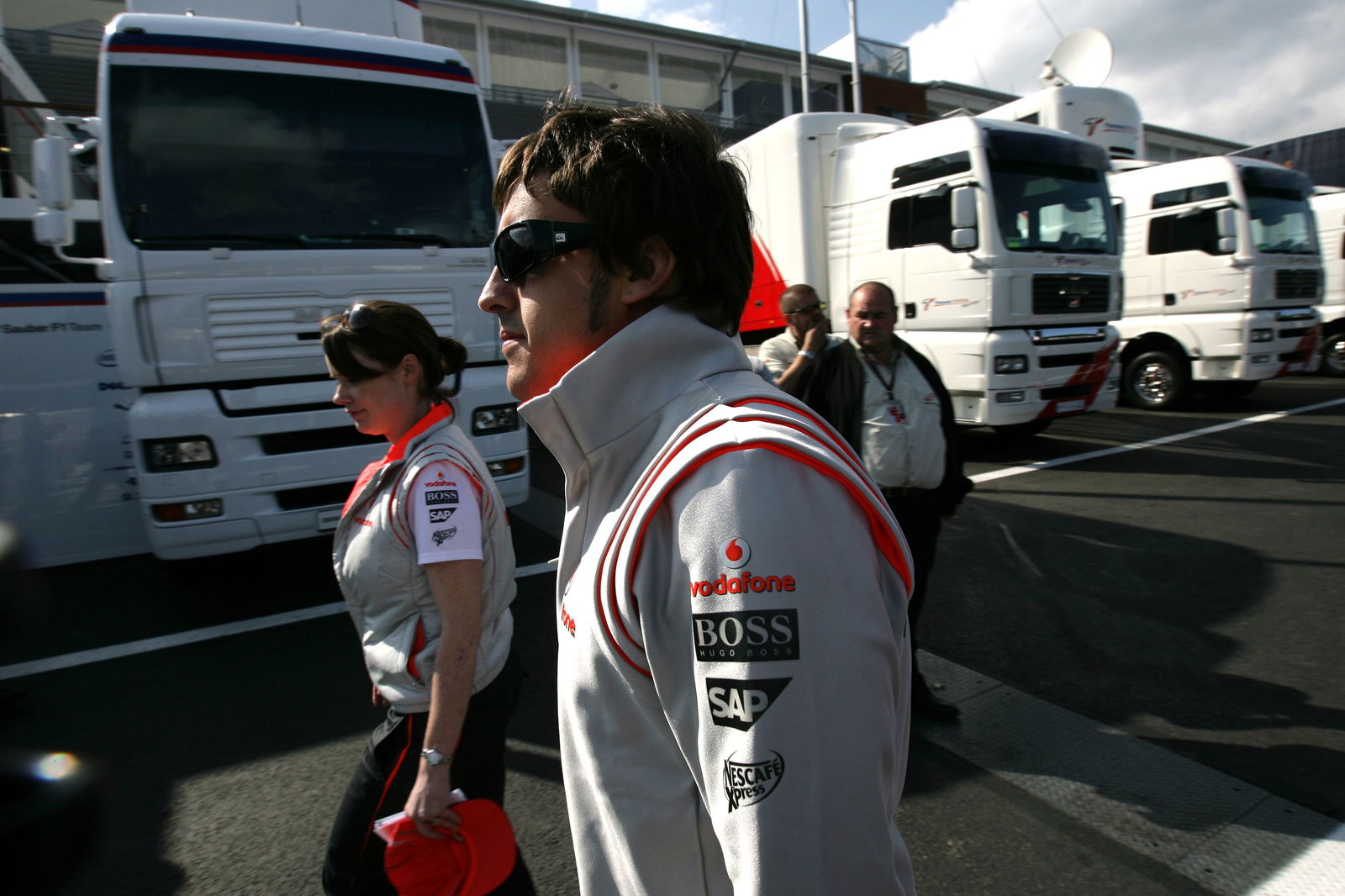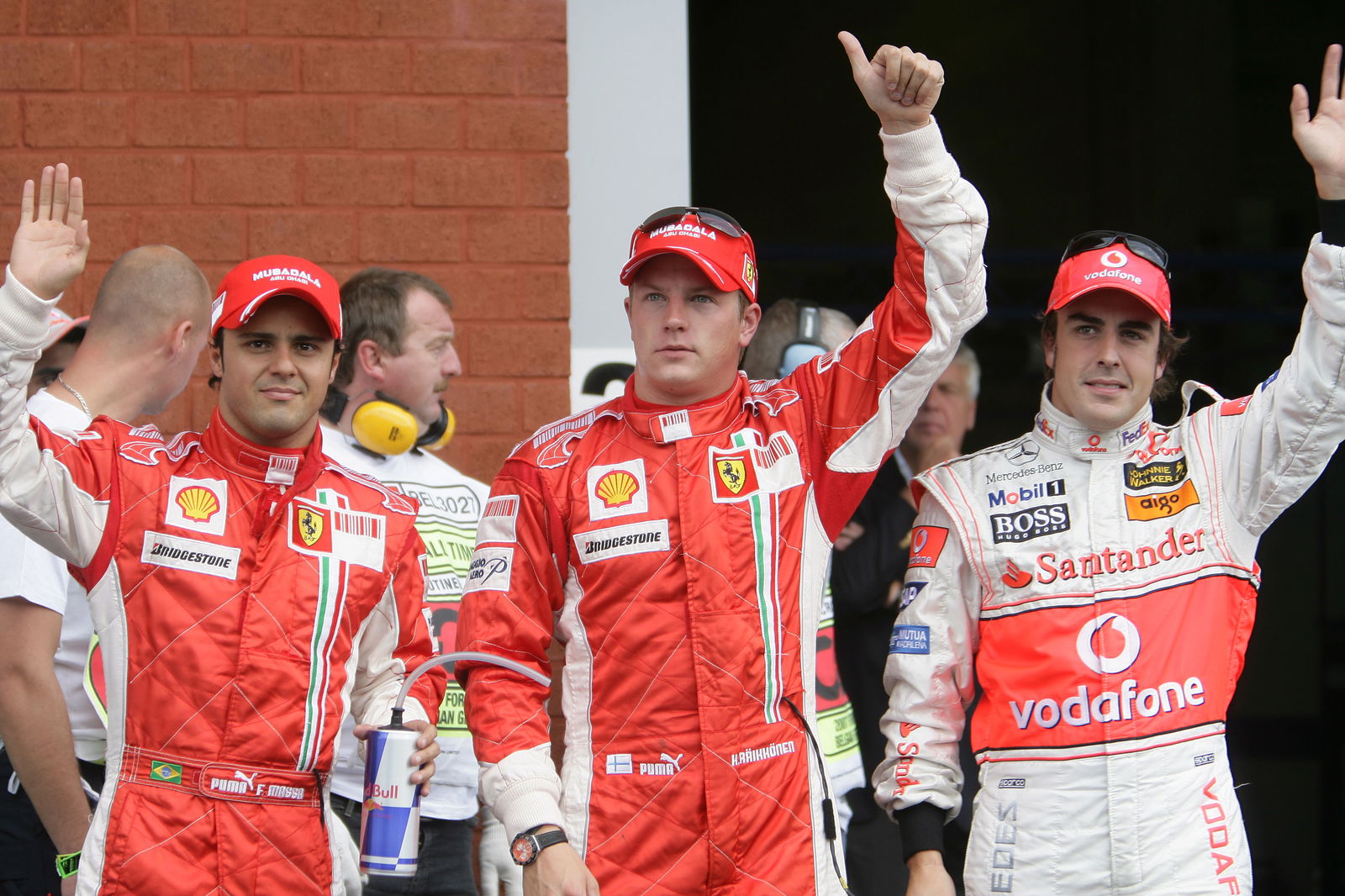WMSC reveals e-mail communications.
E-mails and text messages exchanged between McLaren drivers Pedro de la Rosa and Fernando Alonso proved to be pivotal evidence in the second World Motor Sport Council hearing into the ongoing 'spygate' saga, an official report has revealed.
E-mails and text messages exchanged between McLaren drivers Pedro de la Rosa and Fernando Alonso proved to be pivotal evidence in the second World Motor Sport Council hearing into the ongoing 'spygate' saga, an official report has revealed.
As rumoured before the Paris court convened, correspondence between McLaren's two Spanish pilots proved that information contained in the dossier of data obtained by chief designer Mike Coughlan was spread more widely than the team's senior management was led to believe. Team boss Ron Dennis repeatedly claimed that only 'rogue employee' Coughlan was in possession of the information - despite attempts to involve others - but, having been prompted by an unnamed Italian source, the FIA requested all three McLaren drivers divulge any correspondence that may be relevant to the case, leading to the incriminating e-mails and texts being used as evidence.
"In the period after the 26 July decision, the FIA was made aware of a specific allegation that e-mails relevant to the FIA's investigation had been exchanged between certain McLaren drivers," section three of the official WMSC report revealed, "The FIA therefore wrote to three McLaren drivers (Mr Alonso, Mr Hamilton and Mr de la Rosa) to establish whether or not this allegation had any basis in fact, and requested that they produce copies of any relevant documents, including any electronic communications (howsoever conveyed or stored) which may be relevant to this case and which make reference to Ferrari, Ferrari's employee Nigel Stepney or any technical or other information coming from or connected with either Ferrari or Stepney."
Using the carrot of immunity from sanctions, including the loss of individual championship points, the governing body was able to use the content of the correspondence between Alonso and de la Rosa - Hamilton claimed to have no useful information - to press home its case against their employer, even if it could not prove definitively that McLaren had used information from the dossier in the design of its MP4-22.
"All three drivers responded," the report confirmed, "Mr Hamilton responded that he had no information responsive to the FIA's request, [but] Mr Alonso and Mr de la Rosa both submitted emails to the FIA which the WMSC finds highly relevant.
"Subsequently (at McLaren's request) both Mr Alonso and Mr de la Rosa made written statements to the WMSC verifying that these e-mails were sent and received and offering context and explanations regarding the e-mails. The e-mails show unequivocally that both Mr Alonso and Mr de la Rosa received confidential Ferrari information
via Coughlan; that both drivers knew that this information was confidential Ferrari information and that both knew that the information was being received by Coughlan from Stepney.
The information exchanged by Alonso and de la Rosa showed that they had knowledge of several areas of the Ferrari dossier relating to the set-up and design of the F2007, including its weight distribution, flexible wing and aero balance, means of tyre inflation and braking systems. The report also revealed that Stepney had been passing on information relating to Ferrari race strategy.
The following details various communications between the drivers, and between the drivers and Coughlan, on those areas.
On the matter of weight distribution, de la Rosa contacted Coughlan as long ago as 21 March to enquire about how the Ferrari was set up.
"Hi Mike, do you know the red car's weight distribution?," he wrote, "It would be important for us to know so that we could try it in the simulator. Thanks in advance, Pedro. PS I will be in the simulator tomorrow."
de la Rosa's statement to the hearing confirmed that Coughlan replied by text message with precise details of Ferrari's weight distribution. Four days later, de la Rosa sent an e-mail to Alonso which set out Ferrari's weight distribution to two decimal places on each of Ferrari's two cars as set up for the Australian Grand Prix. The world champion replied the same day, his e-mail including a section headed 'Ferrari' in which he admitted that 'its weight distribution surprises me; I don't know either if it's 100 per cent reliable, but at least it draws attention' before continuing with a discussion of how McLaren's weight distribution compared with Ferrari's.
It was at this point that de la Rosa confirmed that the data was worth paying attention to given its source.
'All the information from Ferrari is very reliable," he wrote back, "It comes from Nigel Stepney, their former chief mechanic - I don't know what post he holds now. He's the
same person who told us in Australia that Kimi was stopping in lap 18. He's very friendly with Mike Coughlan and he told him that."
Despite de la Rosa specifically requesting Ferrari's weight distribution data to test in the simulator, he subsequently decided that the figures were so different to those on the McLaren that it would not be worth comparing. The WMSC, however, claimed that it was 'highly unlikely' that a test driver would take a decision of that sort on his own, and added that it was not clear why, if the information was 'unimportant', he would still convey and discuss it with Alonso some days later. The report claims that de la Rosa's evidence 'makes clear that there was no reluctance or hesitation about testing the Ferrari information for potential benefit, but only that on this occasion he says that there was a technical reason not to do so'.
The same e-mail detailed information about Ferrari's flexible wing and aero balance, with de la Rosa stating that tests had been carried out on a wing which was 'a copy
of the system we think Ferrari uses'. Ferrari's precise aero balance at 250kph was also apparently identified.
de la Rosa's e-mail to Alonso continued, identifying a gas that Ferrari used to inflate its tyres in an effort to reduce internal temperature and blistering. The e-mail concluded with the statement 'we'll have to try it, it's easy!'. Alonso replied by saying that it was 'very important' that McLaren test the gas, but subsequent evidence given by the test driver claims that he only spoke to a Bridgestone engineer about the possible benefits of using the gas and that he did not take the matter further with anyone at McLaren. Despite the fact that it had apparently been successfully used at Ferrari, the idea was dropped and McLaren made no attempt to test the gas.
Again, the WMSC felt it unlikely that a test driver would engage in such consultations on his own without discussing it with anyone on the team, while the report used de la Rosa's evidence to prove that 'there was no reluctance or hesitation about using the Ferrari information', but that it was not used only because there would be no advantage in doing so.
The e-mail exchange between de la Rosa and Alonso also detailed Ferrari's braking system, to the best of the test driver's knowledge, and backed up claims that the dossier had been used. "With the information that we have, we believe Ferrari has a similar system," de la Rosa wrote, having previously requested details from Coughlan. Although initially unsure that e-mail would sufficiently convey the complexity of the system, Coughlan sent de la Rosa 'a technical description which purports to be a description of the principles underpinning the Ferrari braking system' on 14 April, claiming that McLaren was 'looking at something similar', suggesting that he was prepared to use the data supplied to benefit the final product, if not prompt a copy. Ferrari has confirmed that the description of the system was accurate, if incomplete.
Details of Ferrari's Australian GP pit-stop strategy ultimately proved to be inaccurate - to the tune of one lap - but the WMSC took the fact that de la Rosa was prepared to rely on Stepney's information as suggestion 'that McLaren had at least taken account of the information in determining its own strategy'. The evidence provided also proved that Stepney had fed information through Coughlan - something the Ferrari man insists that he had no part in.
The WMSC also concluded that 'as there is no legitimate context in which another teams' stopping strategy would be revealed to McLaren in advance, there is very clear evidence that both drivers knew that they were receiving unauthorised and confidential Ferrari information. To the WMSC's knowledge, no effort was taken to report or
stem this flow.'

